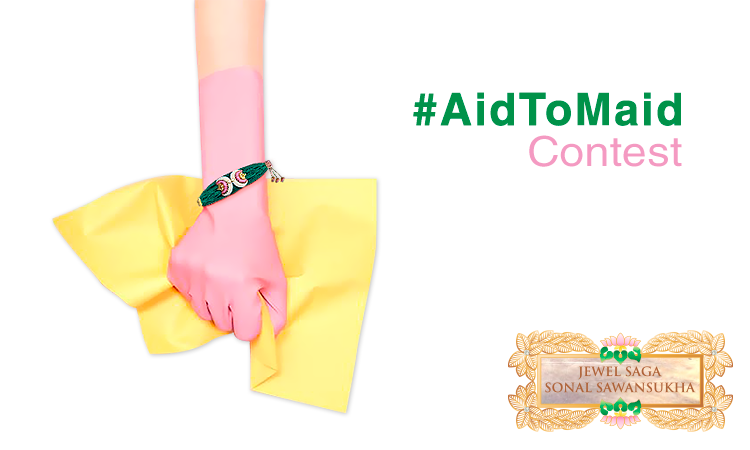14 Mothers Reveal Their Secret Cooking Ingredient & The List Is Incredible!
- JWB Post
- May 12, 2016
No amount of junk food – howsoever cheesy, howsoever fried, or howsoever mouth-watering – can win in a duel against maa-ke-haath-ka-khana. The aroma, the flavour, basically, the everything of maa’s choicest recipes is so full of love.
And take it as a takeaway truth from us that other than love, every mother has some secret ingredient that she uses as a magic wand to transform her food into something delicious and healthier than ever.
Read below about 14 such culinary weapons used by mothers across different cuisines, compiled by the GoyaStories. Meanwhile, I’ll go call up Mommy and ask her what’s cooking! *NomNom*
Bengali
“I would recommend Radhuni – it’s a small seed – in fact a lot of Bengalis don’t even use it, but it’s a very good addition because it helps with digestion and is a great flavour enhancer. Just add a tiny pinch to your dal, and it will taste super. We use it in our light Bengali dals, and in shukto, a sabzi made with bitter gourd, that is typically eaten at the beginning of a meal. Can’t do without it.”
Reshmi Basu, 58.
Coorg
“My favourite is the methi seed, or Vendhayam as it is known locally. It can be bitter when used in excess, but used sparingly (not more than half a teaspoon) it can transform a dish! We never cook fish without it; it takes away that fishy smell. We use it in sambar and rasam, and always in pork – it’s a key ingredient in pandhi curry and fish curry. In Coorg, where it is called menthe, it is roasted and ground into curry power. We even use it in sweets like thambuttu, during festivals, and in elle-addige given to nursing mothers.”
Nimi Chengapa, 56.
Khasi
“It would have to be the Nei Iong, or the black sesame seeds that are ground and made into paste, most commonly cooked with pork. It is found all over Meghalaya. But it is hard to describe the flavour. It is not sour, bitter, or spicy. But it lends depth to a dish with a subtle, mild pungency. I can also vouch that it is definitely very yummy.”
Rita Blah, 62.
Kerala
“Kudampuli is an essential ingredient to many Kerala dishes. Commonly known as Gambooge or the Malabar tamarind, the rind of this golden fruit is sundried and smoked, then rubbed with rock salt and oil, and the end product, a beautiful black kudampuli, will keep for years. Interestingly, the ingredient itself is never eaten. It is added to dishes, particularly fish and seafood curries, to lend that unique sour, tangy flavour that we love.”
Ayesha Oommen, 58.
Sindhi
“The Sindhi community uses Asafoetida quite a lot. It has a very distinctive taste and smell that is quite difficult to describe. We use it as a tadka that is fried and add to dals. We also add it to the Sindhi besan curry; you can’t make Sindhi curry without asafoetida. It helps with digestion and makes a big flavour difference in flavour.”
Sonia Haresh, 50
Parsi
“Oh, most definitely kothmeer! It transforms every single dish and is an absolutely brilliant ingredient. I’m totally in love with coriander. It’s a simple herb but practically transforms Parsi cuisine. However flat a dish may be, with coriander, it takes on a different dimension. You must chop it fresh, and use it as garnish; it must be added at the very last minute before serving. You know the Parsi akuri? It is totally flat without coriander. Coriander is the key; its fragrance is unimaginable. I’ve often wondered why people don’t stress more on using coriander; it transforms any dish. Especially Indian food.”
Kamal Messman, 66.
Gujarati
“We use a lot of gud, or jaggery, in our cooking. Gujaratis enjoy a bit of sweetness in our food, so we add gud to our kadhi, to our dals, vegetables and curries. I definitely like my dal sweet, and gud is a healthier option than white sugar since it has high calcium content. So there you go!”
Preeti Mehta, 52.
Goan
“I will probably have to say it is the Goan vinegar. Local, homemade, extracted Goan vinegar lends a strong, sour, pungent flavour. It is much stronger than regular bottled vinegar, and pork needs that strong flavour. It is the secret ingredient to our Goan pork vindaloo. Some families here in Goa still make this vinegar at home; it is made from toddy, from the coconut palm. And this homemade Goan vinegar can transform the taste of any dish.”
Maria Doroteia Souza, 59.
Khatri Punjabi
“It would have to be garam masala. Garam masala lends that signature Punjabi flavour to a dish! It is a mixture of several spices – badi elaichi, laung, kali mirch, daniya, and dalchini (black cardamom, clove, black pepper, coriander seeds and cinnamon), and is the last thing you add before serving. Just sprinkle a little bit on top of any curry, vegetarian or meat, and it will lend its spicy, fragrant, complex characteristics to the dish.”
Anju Narang, 55.
Rajasthani
“Kasoori methi or dried fenugreek leaves is transformative. It changes the flavour of any dal or curry. Lightly roasted, powdered and hand-crushed, it is added at the final stage of cooking. The dried leaves are crumbled and sprinkled over dals and vegetable curries to enhance the flavour. Not may people are aware of this secret ingredient!”
Manju Ashiya, 47.
Telugu
“Tamarind is an ingredient we use with fish and chicken, and it adds a lovely spicy-sour balance to the dish. We put it in our dals as well, instead of tomato, since it has a sharper, more distinct sour taste. You need to take a tiny ball of tamarind and soak in warm water for a few minutes, and strain the liquid to use. We also use it in a ladies finger curry, to take away the stickiness that children so often dislike. It’s a wholly natural ingredient, and it really works magic with its flavours.”
Hema Wesley, 62.
Odiya
“Mustard is a magical ingredient. It is widely used in Odiya cuisine, and is famously an ingredient in Lord Jagannath’s mahaprasad. Adding mustard to any dish gives it a whole new dimension. It can be used with its peel on to lend a distinctive, strong flavour to the dish, and without the peel to yield a subtle and sweet taste. Mustard oil is another game changer, much like olive oil is used in Europe.”
Sabriti Sahoo, 54.
Mappila
“Curry leaves – the smell that curry leaves give out when added to hot oil is intoxicating. Added to a fiery red fish curry, it tempers the flavours and gives it an earthiness. Although we mostly use in traditional dishes, I’m discovering that a sprig or two in pasta and roast chicken instantly adds depth and complexity.”
Kathija Hashim, 60.
Mangalorean
“Mangaloreans add coconut to everything – curries, rice, palyas, mutton and chicken. Coconut has a sweet, distinctive flavour. To chicken curry, we add coconut milk; in our sabzis, we garnish with grated coconut, and grind it into a paste for our curries. It adds texture, will thicken a sauce, and cut down the spiciness of a dish, making it easier on the palate with its creamy, rich flavours. And in addition, it looks beautiful as garnish, and lifts even the simplest homemade sabzi. Used in moderation, I don’t think we need to worry about high cholesterol – the coconut is back in vogue now.”
Nalini Manasseh, 63.
- 0
- 0

Current Discussion
Popular Post
-
Indian Women
Tarishi Jain’s Last FB Post Makes Us Think Of The Future That’ll Never Be







